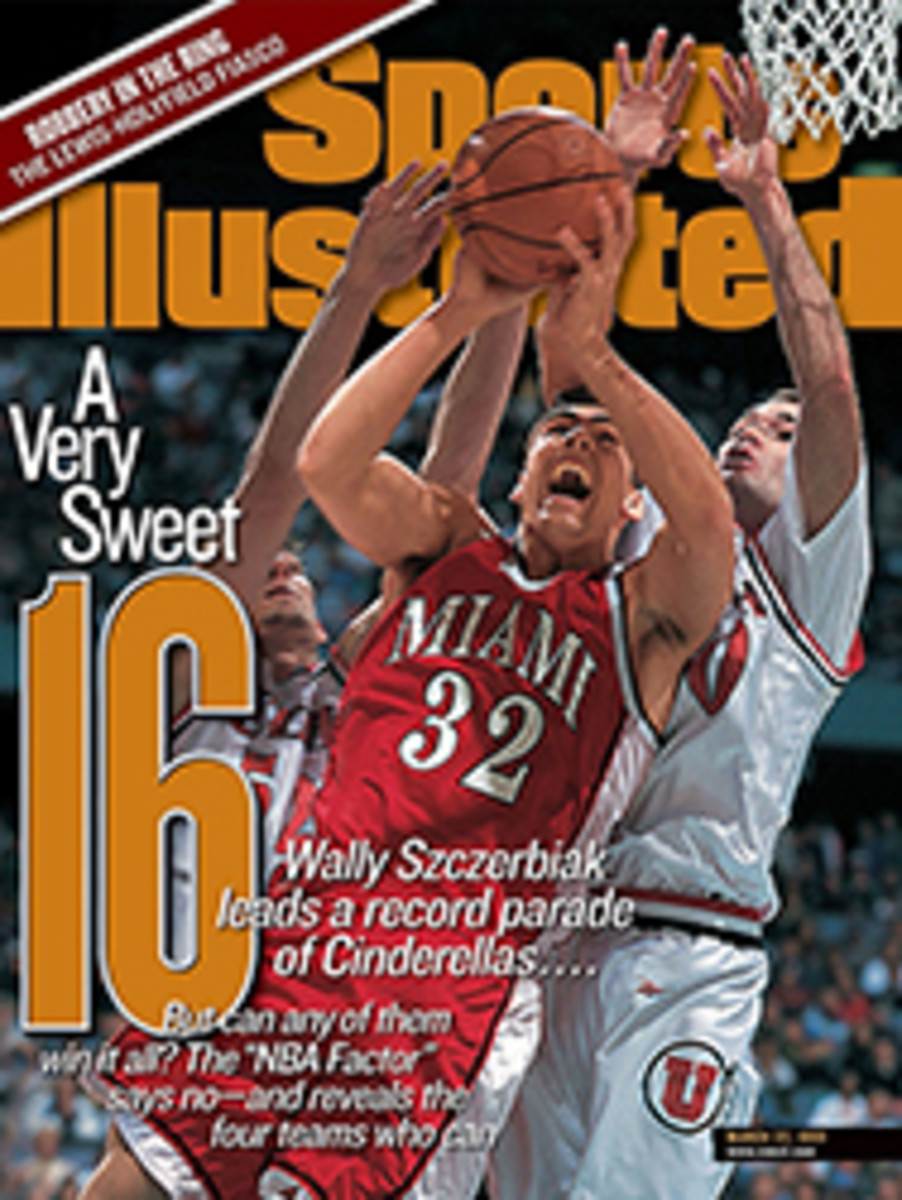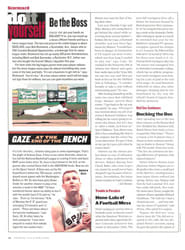
Ad To The Bone Sports owners attempting to suck up every last advertising dollar are giving naked greed a bad name
Watching a New York Rangers hockey game on television the other
night, I saw, in a single rush up the ice, ads along the boards
for GMC and Gulf, Dodge and Sharp and Snapple, IBM, Office
Depot, Dunkin' Donuts, PaineWebber, Kodak, Amtrak, Bud Light,
MetLife, American Express, Starter and Surge. I got my replays
from the MCS Canon Cam and kept track of power plays with the
AT&T scoreboard graphic. The Rangers sat on a bench underwritten
by the History Channel. (How apt!) At the first intermission,
they exited beneath a sign hawking Ranch 1 chicken. Then the
commercials started.
Scientists say humans rarely use even 10% of their brain
capacity. They keep mum on what we do with the other 90%.
Longtime television sports viewers like me, though, know the
truth. All additional cerebral storage space is devoted to
commercial retention. I may not know my parent's phone number,
but I can remember 30-year-old beer jingles as though I'd
written them myself.
At a time when a journeyman point guard eats up the price of a
private island in the Aegean, sports franchises and their
television sponsors are desperately counting on fixed-position
advertising to help pay their enormous freight. Commercials
aren't enough anymore, not since the remote control made them
zappable. Broadcasters and franchises need to sell ad space you
can't flip past or turn away from: Watch the game, see the spot.
Whether it's the scrolling sign built into the scorer's table at
a basketball game (Hardee's, Auto Zone, IBM) or the under-bumper
NASCAR Cam (Valvoline, True Value, 1-800-How-'Bout-A-Kidney),
certain forms of advertising are now inescapable. You take them
in without really seeing them; they're in the very air--it's
like we're inhaling them. A Mercedes logo hanging from the net
at a tennis tournament you don't even remember watching is
taking up space in your subconscious right now. (That's why you
can't remember the Gettysburg Address.)
Any pretense to community or charity or even neutrality in the
naming of golf tournaments, bowl games or stadiums was sold long
ago. But there's still some available screen space, so that's
being sold, too. Hence your Miller Genuine Draft sports ticker
and CNN/SI's "The New Dodge Inside Sports" sports update.
I'm not even sure how effective this stuff is. Seeing Pavel Bure
spit out a bloody tooth while he's sitting in front of a Dunkin'
Donuts sign isn't likely to make me run out for a cruller. Nor is
watching a stock car painted up like a box of Tide tumbling end
over end at 180 miles per hour, gouts of flame billowing from its
ruptured fuel tank while trailing a meteor shower of car and
human body parts behind it, going to make me feel more confident
about my next load of fine washables.
This phenomenon is even worse in Europe. Many of their leading
social critics complain that popular American culture is a little
too popular there, that McDonald's and Coca-Cola and Tom Hanks
are just tools in the new age of Yankee commercial imperialism.
What's really surprising is that there's any room left for them.
Have you ever seen a Formula One race? Or a Swedish hockey game?
Not a single square inch of salable ad space is wasted. From the
toolboxes at Monaco to the butt of the goalie's breezers in
Stockholm, there are endorsements for Elf or Adidas or Wheetabix
plastered everywhere.
Which is probably the next move for North America's
insupportable big-time sports economy. Auto racing is already
there, a model of shameless commercial saturation, but in the
decade ahead you'll begin to see the proliferation of pinched
microcommercialism of on-uniform advertising in other sports as
well. Can't we just skip a step and save everyone some trouble
and confusion? Introducing your Ford Rangers! Your Mobil 1
Synthetic Oilers! Your Wishbone Salad Dressing Thousand Islanders!
I wasn't using my brain for anything important anyhow.
COLOR ILLUSTRATION: DAN PICASSO

